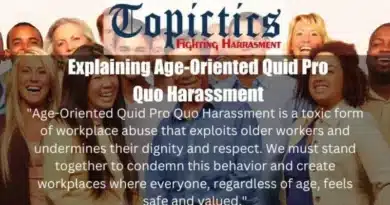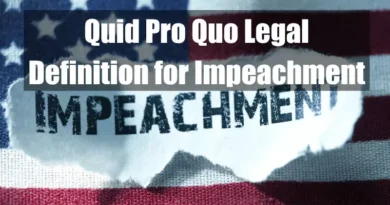Implicit Quid Pro Quo Harassment: A Subtle Abuse of Power
Takeaways
| Key Points |
|---|
| Implicit quid pro quo harassment is a subtle yet insidious form of workplace misconduct where individuals in positions of power indirectly imply that job benefits, such as promotions or favorable evaluations, are contingent upon accepting sexual advances or other forms of intimate interactions. |
| Unlike explicit quid pro quo harassment, which involves clear demands for sexual favors in exchange for professional rewards, implicit quid pro quo harassment operates through vague language, suggestive comments, and ambiguous social pressures that create an atmosphere of coercion while maintaining plausible deniability. |
| This type of harassment is particularly challenging to identify and prove due to its indirect nature, requiring victims to demonstrate a connection between the harassment and tangible employment actions, such as demotions or denied promotions, often through patterns of behavior and witness testimony. |
| Legal frameworks, including Title VII of the Civil Rights Act of 1964, prohibit such conduct, holding employers accountable, particularly when the harasser holds a position of authority. |
| However, proving implicit quid pro quo harassment remains difficult due to the subtlety of threats and promises, necessitating thorough documentation and legal expertise to establish a strong case. |
Introduction to Implicit Quid Pro Quo Harassment
Definition and Overview
Implicit quid pro quo harassment is a subtle and insidious form of workplace misconduct. Unlike explicit quid pro quo harassment, where sexual favors are clearly exchanged for job benefits, implicit quid pro quo harassment involves more nuanced, indirect coercion.
This type of harassment is not as overt, making it harder to identify and prove. It occurs when an individual in a position of power subtly implies that employment benefits such as promotions, favorable evaluations, or continued employment may depend on the acceptance of sexual advances or other forms of intimate interactions.

Distinguishing Implicit Quid Pro Quo Harassment from Explicit Quid Pro Quo Harassment
The key difference between implicit and explicit quid pro quo harassment lies in the manner of communication. Explicit quid pro quo harassment is straightforward and unmistakable. An example would be a supervisor directly asking an employee for sexual favors in exchange for a promotion. Implicit quid pro quo harassment, however, operates in the shadows. It involves hints, suggestive comments, or actions that imply a connection between an employee’s job security or advancement and their response to inappropriate behavior.
This subtlety makes it more challenging to confront and litigate, as the harasser often operates within a gray area that can be difficult to pin down.
Legal Framework and Precedents
Implicit quid pro quo harassment is illegal under federal laws such as Title VII of the Civil Rights Act of 1964, which prohibits sex discrimination in the workplace. This form of harassment can also fall under state and local anti-discrimination laws, which may offer broader protections.
Legal precedents have established that employers can be held liable for implicit quid pro quo harassment, especially when it involves a supervisor or someone in a position of authority over the victim. Courts have also recognized the difficulty in proving such cases due to their subtle nature, often requiring a careful analysis of the context and the relationship between the parties involved.
Key Characteristics of Implicit Quid Pro Quo Harassment
The Nature of Implicit Communication
Implicit quid pro quo harassment thrives on ambiguity. The harasser may use vague language or gestures that suggest a conditional relationship between sexual cooperation and workplace rewards or the avoidance of penalties. This type of communication can include comments about how being “more friendly” could lead to better career opportunities or how not attending certain social events with a supervisor might affect one’s standing at work.
The ambiguity in these interactions allows the harasser to maintain plausible deniability, making it harder for victims to assert their rights.

Power Dynamics and the Role of Authority
Power dynamics play a crucial role in implicit quid pro quo harassment. The harasser often holds a position of authority over the victim, such as a supervisor, manager, or senior colleague. This power imbalance creates an environment where the victim may feel compelled to comply with the harasser’s implicit demands out of fear of retaliation, such as being overlooked for promotions, receiving poor performance evaluations, or even losing their job.
The harasser’s authority amplifies the coercive nature of their actions, as the victim may perceive a real threat to their livelihood or career advancement.
Subtlety in Threats and Promises
Implicit quid pro quo harassment is characterized by the subtlety of its threats and promises. Unlike overt demands, the harasser’s insinuations are often cloaked in casual remarks or friendly advice, making it difficult for the victim to identify the behavior as harassment. For example, a supervisor might imply that an employee’s chances of promotion would improve if they were more “cooperative” in social settings outside of work.
Alternatively, the harasser might hint that rejecting advances could lead to negative consequences, such as being assigned less favorable tasks or losing opportunities for professional development.
These subtle cues can create a pervasive sense of uncertainty and fear for the victim, making it challenging to report or address the harassment.
Examples of Implicit Quid Pro Quo Harassment

Example 1
A manager frequently suggests that employees join them for dinner after work, hinting that doing so could positively influence their upcoming performance review.
Implicit Statement:
“You know, it’s always good to have these casual dinners. It’s where the real decisions get made about who’s ready for the next step.”
Explanation:
The manager’s suggestion implies that participating in social activities outside of work, particularly with the manager, could directly affect the employee’s career advancement. The pressure to comply is subtle but understood by the employee as necessary for favorable treatment in their performance review.
Example 2
A senior colleague repeatedly invites an employee to late-night office gatherings, implying that these events are crucial for career progression while subtly hinting at personal closeness.
Implicit Statement:
“You know, being part of these late-night strategy sessions really helps you get on the radar of the higher-ups. It’s nice to unwind with someone who gets the bigger picture.”
Explanation:
The senior colleague insinuates that attending these gatherings is important for career visibility and an opportunity for personal bonding that could influence the employee’s standing within the company. The suggestion implies that declining these invitations could harm the employee’s prospects.
Example 3
A supervisor comments on an employee’s appearance and suggests that dressing more “flattering” could help them “stand out” during the next round of promotions.
Implicit Statement:
“You always do great work, but have you ever thought about how presentation counts? Sometimes looking the part is just as important as doing the part, especially with promotions coming up.”
Explanation:
The supervisor’s comment subtly pressures the employee to change their appearance to align with the supervisor’s preferences under the guise that it could impact their chances of promotion. This creates an uncomfortable situation where the employee feels compelled to meet these unspoken expectations.
Example 4
A project leader repeatedly tells an employee that they would benefit from “being more social” with higher-ups, subtly indicating that refusal could affect their career trajectory.
Implicit Statement:
“It’s good to see you working hard, but don’t forget—it’s important to be seen as a team player by the right people. Maybe join us for drinks with the executives sometime?”
Explanation:
The project leader indirectly suggests that networking and socializing with executives is key to the employee’s career progression. Not participating in these social events could negatively affect the employee’s future opportunities within the company.
These examples illustrate how implicit quid pro quo harassment can manifest in everyday workplace interactions. The common thread is the subtle pressure applied by individuals in positions of power, creating an environment where the victim feels coerced into complying with implied demands to protect their career interests.
Legal Criteria for Proving Implicit Quid Pro Quo Harassment

Burden of Proof: Key Elements Required
To establish a case of implicit quid pro quo harassment, the victim must demonstrate that the harasser’s behavior was unwelcome and that there was an implicit link between the harassment and a job-related consequence.
The victim must show that rejecting the harasser’s advances led to or could have led to a tangible employment action, such as a demotion, denial of a promotion, or termination. Evidence might include behavior patterns, witness testimony, and any communications that imply a connection between the harassment and employment outcomes.
Case Law and Judicial Interpretations
Courts have recognized the difficulty in proving implicit quid pro quo harassment due to its subtle nature. Key cases, such as Henson v. City of Dundee and Meritor Savings Bank v. Vinson, have set precedents highlighting the importance of power dynamics and the need for a clear connection between harassment and job-related consequences.
It is important to note that these cases primarily address the broader context of quid pro quo and hostile work environment harassment.
Judges often look for a “nexus” between the harasser’s conduct and the victim’s employment conditions, considering factors such as the frequency of the advances and the context in which they occurred.
Challenges in Proving Implicit Harassment
Proving implicit quid pro quo harassment is challenging because it relies heavily on context and the perceived intent behind ambiguous actions or statements. Victims may struggle to gather concrete evidence, as the harassment often occurs in private or through non-verbal cues.
Additionally, the harasser’s ability to deny any wrongdoing due to the subtlety of their actions further complicates the victim’s ability to make a strong case. Legal counsel is often essential in navigating these complexities, helping to build a case that clearly demonstrates the implicit threats or promises made by the harasser.
Preventive Measures and Employer Responsibilities

- Develop Clear Anti-Harassment Policies: Establish comprehensive policies that explicitly address both explicit and implicit quid pro quo harassment.
- Implement Regular Training Programs: Conduct mandatory training sessions for all employees, emphasizing identifying and preventing implicit harassment.
- Create Accessible Reporting Mechanisms: Provide multiple channels for employees to report harassment confidentially and safely.
- Foster a Culture of Transparency: Encourage open communication and clarify that any form of harassment will not be tolerated.
- Monitor Workplace Dynamics: Actively observe interactions within the workplace to detect potential power imbalances that could lead to implicit harassment.
- Provide Support Resources: Offer access to counseling and legal resources for employees who may be experiencing harassment.
- Conduct Thorough Investigations: Ensure all harassment claims are investigated promptly and thoroughly, with appropriate disciplinary actions taken when necessary.
- Hold Leadership Accountable: Train managers and supervisors to recognize and prevent implicit harassment and hold them accountable for maintaining a safe work environment.
- Promote Gender Equality: Encourage diversity and inclusion initiatives that address gender-based power dynamics.
- Review and Update Policies Regularly: Continually assess and update anti-harassment policies to reflect current legal standards and workplace needs.
By implementing these preventive measures and responsibilities, employers can create a safer and more equitable workplace. They can effectively reduce the risk of implicit quid pro quo harassment and foster an environment where all employees feel supported and respected.
Legal Recourse and Remedies for Victims

Filing Complaints with the EEOC and Other Bodies
Victims of implicit quid pro quo harassment can file complaints with the Equal Employment Opportunity Commission (EEOC) or equivalent state agencies. These bodies investigate the claims and can mediate between the victim and the employer. Filing a complaint is often a necessary step before pursuing a civil lawsuit.
Civil Lawsuits and Compensation Claims
Victims may also choose to file a civil lawsuit against the harasser or their employer, seeking damages for lost wages, emotional distress, and other harms. Courts may award compensatory and punitive damages depending on the severity of the harassment and the impact on the victim’s career and well-being.
Role of Legal Counsel in Navigating Complex Cases
Given the nuanced nature of implicit quid pro quo harassment, legal counsel is crucial in building a strong case. Lawyers can help victims gather evidence, present their case effectively, negotiate settlements, or pursue litigation. They also play a vital role in advising on the best legal strategies to maximize the chances of a successful outcome.
Conclusion
Implicit quid pro quo harassment is a pervasive issue that undermines the integrity of the workplace. Its subtle nature makes it challenging to identify, prove, and address. However, with a clear understanding of its characteristics and the legal frameworks, employers and employees can take steps to prevent and combat this form of harassment.
By fostering a culture of transparency, enforcing strict anti-harassment policies, and providing robust support systems, workplaces can protect all employees from coercive and discriminatory behavior.
FAQ
What is implicit quid pro quo harassment?
Implicit quid pro quo harassment occurs when unwelcome sexual conduct is subtly linked to employment decisions without explicit statements. For instance, a supervisor might imply that favorable job assignments depend on accepting sexual advances, creating an environment where the employee feels pressured to comply.
How does implied conditioning relate to implicit quid pro quo harassment?
Implied conditioning involves indirect suggestions that job benefits or avoidance of detriments are contingent upon acquiescing to sexual conduct. This subtlety can make it challenging for victims to recognize and report the harassment.
What role does non-verbal coercion play in implicit quid pro quo harassment?
Non-verbal coercion includes behaviors like leering, invading personal space, or giving unwelcome gifts, creating discomfort, and implying expectations without words. Such actions can pressure employees to comply due to perceived job-related consequences.
How does the power dynamic influence implicit quid pro quo harassment?
Supervisors or individuals in authority can exploit their positions by subtly implying that employment benefits are tied to sexual favors. This power imbalance makes it difficult for subordinates to refuse without fearing negative repercussions.
What constitutes a tangible employment action in implicit quid pro quo harassment?
A tangible employment action refers to significant changes in employment status, such as hiring, firing, promotions, or reassignments. In implicit quid pro quo harassment, these actions are subtly linked to the acceptance or rejection of sexual advances.
How does fear of retaliation perpetuate implicit quid pro quo harassment?
Employees may comply with unwelcome sexual advances due to fear of retaliation, such as demotion or job loss. This fear often prevents victims from reporting the harassment, allowing the behavior to continue unchecked.
What is the significance of a hostile work environment in implicit quid pro quo harassment?
Even without explicit threats, implicit quid pro quo harassment can create a hostile work environment. The subtle pressure to engage in unwanted sexual conduct can lead to stress, anxiety, and decreased job satisfaction.
How does implied pressure differ from explicit demands in quid pro quo harassment?
Implied pressure involves subtle cues or behaviors suggesting that job benefits are contingent on sexual favors, whereas explicit demands are direct requests. Both forms can be equally damaging, but implicit cases may be harder to prove due to their subtle nature.
What is the impact of unfulfilled threats in implicit quid pro quo harassment?
Unfulfilled threats, where negative employment actions are implied but not executed, can still create a coercive environment. The mere suggestion of potential consequences can pressure employees into unwanted sexual conduct.
How does the reasonable person standard apply to implicit quid pro quo harassment?
The reasonable person standard assesses whether an average person in the same situation would perceive the behavior as implying that job benefits are contingent on sexual favors. This standard helps determine the presence of implicit quid pro quo harassment.
What is the role of implied threats in implicit quid pro quo harassment?
Implied threats involve subtle suggestions that rejecting sexual advances could lead to negative job consequences. These unspoken threats can be as coercive as explicit ones, making employees feel compelled to comply.
How does the absence of explicit propositions affect the identification of implicit quid pro quo harassment?
The lack of explicit propositions makes implicit quid pro quo harassment harder to identify, as the coercion is subtle and indirect. Victims may struggle to recognize the behavior as harassment, leading to underreporting.
How can implied promises of job benefits contribute to implicit quid pro quo harassment?
Implied promises, such as suggesting that compliance with sexual advances will lead to promotions or favorable assignments, can pressure employees into unwanted sexual conduct. These subtle cues exploit the power imbalance in the workplace.
What is the significance of the term “unwelcome sexual conduct” in implicit quid pro quo harassment?
“Unwelcome sexual conduct” refers to any sexual behavior that the recipient does not desire. In implicit quid pro quo harassment, such conduct is subtly linked to employment decisions, creating a coercive environment.
How does the concept of constructive discharge relate to implicit quid pro quo harassment?
Constructive discharge occurs when an employee resigns due to intolerable working conditions, such as implicit quid pro quo harassment. The subtle pressure to engage in unwanted sexual conduct can make the work environment unbearable, leading to resignation.









